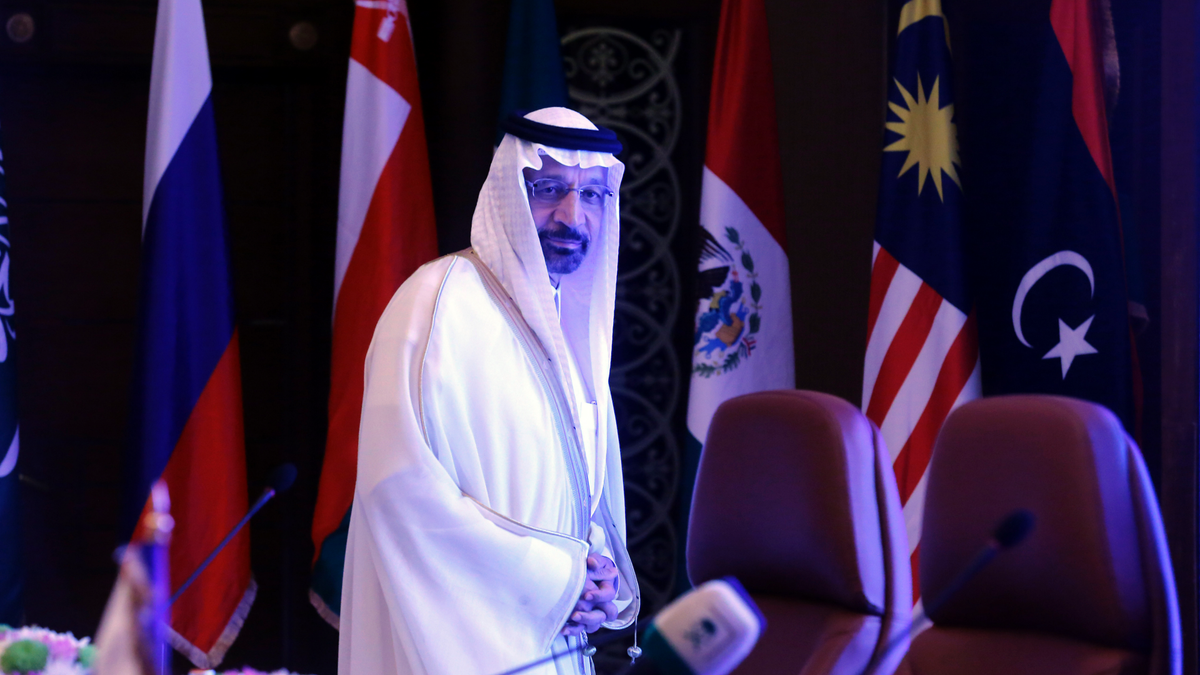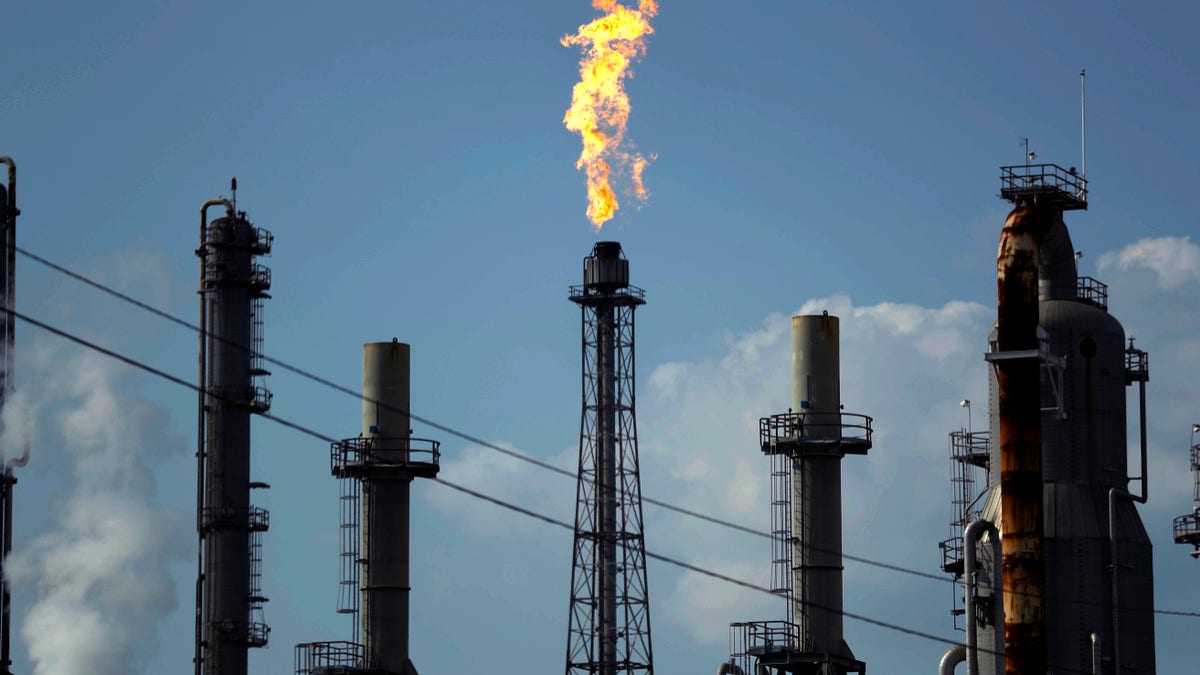Oil prices continue dropping amid coronavirus concerns, lower demand
Oil at the lowest price in more than 3 years; Fox Biz Flash: 3/6.
As the global economy battles shaky terrain, triggered by the multiplying threat of coronavirus (officially known as COVID-19) that has left the oil industry in oversupply, Saudi Arabia and Russia have gone head-to-head in what analysts are calling an all-out oil war.
The tensions boiled over during the Organization of the Petroleum (OPEC) talks between exporting countries in Vienna last week. While OPEC recommended production cuts from April to the end of the year for its 14 members, in an effort to deal with the mounting oversupply spurred by the coronavirus impact, Russia signaled its rejection to that pact on Friday – a bold decision that shocked the energy arena.
“The failed agreement between Russia and Saudi Arabia indicates that we’re in the midst of a price war,” Nick Loris, Heritage Foundation fellow in energy and environmental policy, told Fox News. “Saudi Arabia has been discounting its sales at unprecedented levels to capture as much market share as possible in an effort to really stick it to Russia for failing to agree to production cuts.”
PUTIN COULD MAKE MOVE TO ABSORB BELARUS, EUROPE’S ‘LAST DICTATORSHIP,’ EXPERTS SAY
Saudi Arabia then fired its own shots back over the weekend, igniting a price war by boosting its own production. The kingdom plans to bolster its crude output to a surplus of 10 million barrels per day (BPD) next month, given that the current agreement comes to an end on March 31. As it stands, Riyadh has been producing an average of 9.7 million BPD in recent months.

Saudi Minister of Energy, Industry and Mineral Resources Khalid al-Falih prepares to chair a meeting of energy ministers from OPEC and its allies to discuss prices and production cuts, in Jiddah, Saudi Arabia, Sunday, May 19, 2019. (AP Photo/Amr Nabil)
The full blowback started to emerge Monday as oil prices fell by over a third, marking the biggest plunge since the 1991 Gulf War.
“This signals a move of Saudi Arabia away from market price to market share at a time when the market is already reeling from severe demand destruction as the result of both the warmest winter on record in the Northern Hemisphere and the impact of the coronavirus,” observed Chris Midgley, global head of analytics at S&P Global Platts. “We find ourselves in unprecedented conditions where the market will be looking toward which producer blinks first. While low prices will test Saudi fiscal balances, they have the lowest cost barrels and with low debt can pull on sovereign reserves and take the pain.”
CLICK HERE FOR ALL CORONAVIRUS COVERAGE
It will also directly rattle the United States. U.S. oil prices had tumbled to a four-year low of $27.34 a barrel in anticipation of Saudi Arabia saturating the market with excess crude in its quest to take back market share.
“Our supply chains are disrupted from China, global growth is threatened and we are seeing a major exit in equity markets, first penalizing all energy firms, but spread across a number of sectors,” said Karen Young, a resident scholar at the American Enterprise Institute (AEI). “This is a major threat to the American economy but will hurt oil exporters around the world and those governments dependent on oil exporters for aid and financial support in the Middle East. Gas may be cheaper, but economic growth, on the whole, is threatened.”
According to John Wood, a defense and energy expert focused on Russia, much of Moscow’s movement pivots on its anger toward the United States.
“Russia has been losing market share to Saudi Arabia and the USA and wants to stop the bleeding. Further, Russia wants to punish the U.S. for interfering in its pipeline projects designed to cut out Ukraine and Poland through bringing online Nordstream 2 and Turkstream,” he claimed. “Clearly, Putin feels, as a result of five years of U.S. sanctions, the Russian economy can weather an energy war. The purpose is clear, retain market share and cripple the U.S. shale oil industry.”
The U.S. also slapped secondary sanctions on Russia’s state-owned oil company Rosneft in recent weeks, for its oil dealings inside the increasingly squeezed Venezuela.
“Russia did not start this energy war without being fully committed to seeing it through to the end,” Wood continued. “So much for Putin and Trump being friends.”

A flame burns at the Shell Deer Park oil refinery in Deer Park, Texas. Oil prices are plunging Sunday, March 8, 2020, amid worries that an OPEC dispute will lead a virus-weakened economy to be awash in an oversupply of crude. (AP Photo/Gregory Bull, File)
Nonetheless, some analysts say the pitting of Moscow against Riyadh has been a long time coming.
“These tensions between Saudi Arabia and Russia have been simmering for a long time. Russian and Saudi needs have been diverging steadily since the OPEC+ pact came into being in 2016,” explained Varsha Koduvayur, a senior research analyst at the Foundation for Defense of Democracies (FDD). “That pact helped to put a floor underneath prices, but the oil break-even price for Saudi Arabia and Russia were different. Russia could and can survive with prices in the 50s, but Saudi Arabia needs a much higher break-even price, sowing the seeds of these latest tensions.”
As Saudi kept pushing for more cuts in recent years, she continued, the Russians grew increasingly hesitant.
“There is also a fear of losing market share in Russia; the more they have to cut production, the more market share was ceded,” Koduvayur noted.
WHY RUSSIA, CHINA ARE FIGHTING US PUSH AGAINST VENEZUELA'S MADURO
So where does the situation go from here?
“With oil supply far exceeding demand, we would hope there would be a pullback on production. However, with Saudi Arabia starting a pricing war there will be a large reduction in growth for major oil exporters,” Ken Mahoney, president of the New York-based Mahoney Asset Management, pointed out. “To add to this, for oil-reliant countries and currencies there will be further economic problems to come. We have come an awfully long way over the weekend, so hopefully, some price firmness will develop here and we can navigate our way out of this mess.”
The ramifications of the price war, however, have experts divided.
“This is a temporary worry, just like the coronavirus – it is no different,” said Dan Celia, national media host focused on financial issues. “I think it's safe to call this oil crisis another Black Swan event, and we can expect it to pass sooner than we might think.”
Economist Tim Snyder concurred, underscoring that it is merely a “temper tantrum that we all saw coming,” and, just as the COVID-19 coronavirus will subside, market demand for oil will return quickly.
Others beg to differ.
A Goldman Sachs analysis sent to clients on Sunday highlighted that “the prognosis for the oil market is even more dire than in November 2014 when such a price war started, as it comes to a head with the significant collapse in oil demand due to the coronavirus.”
“For the US, we should expect ramifications into the 2020 election cycle as our economy is disrupted by the COVID-19 response. Many sectors of the U.S. economy are at risk, starting with our shale producers,” added AEI's Young. “But travel and hospitality sectors, the education sector, businesses that depend on person-to-person exchange across various sectors will be impacted. U.S. investors will face losses in their retirement portfolios in ways that make 2009 seem mild.”
